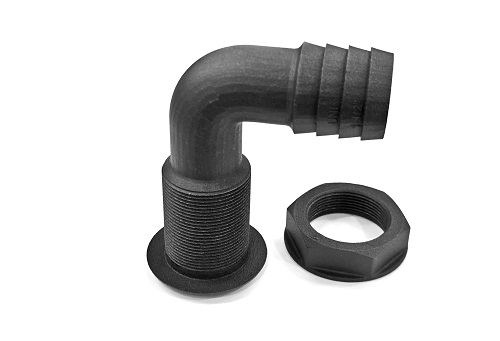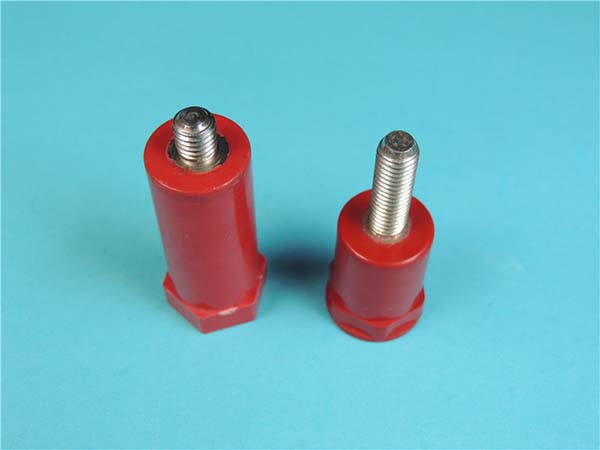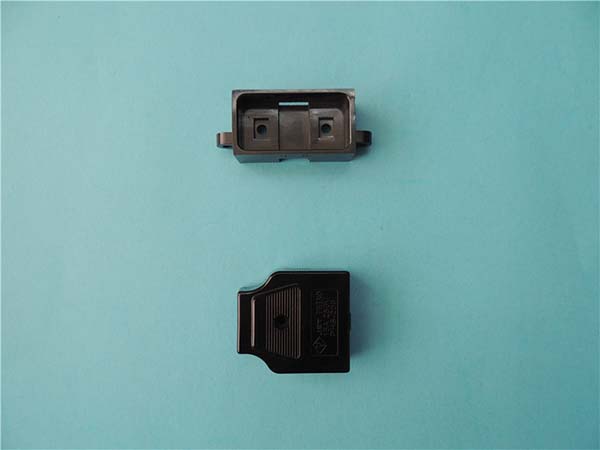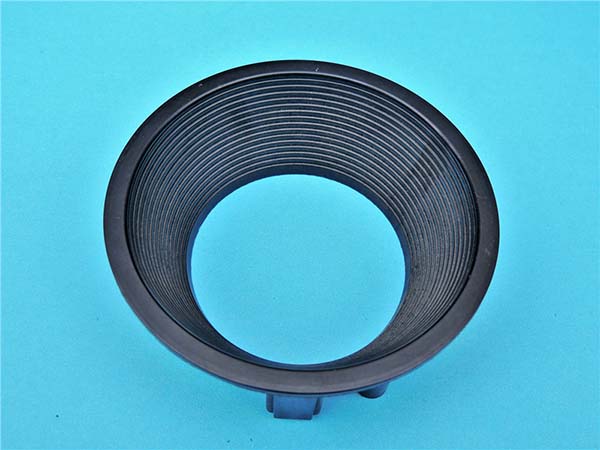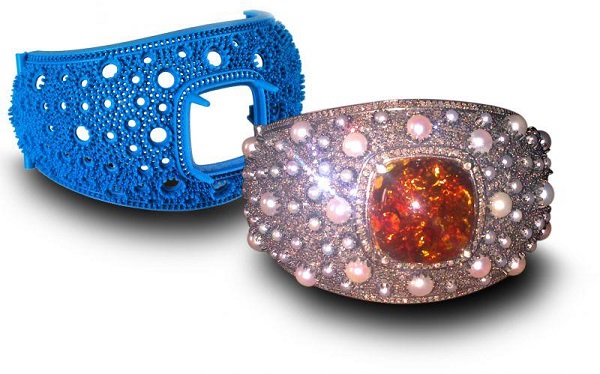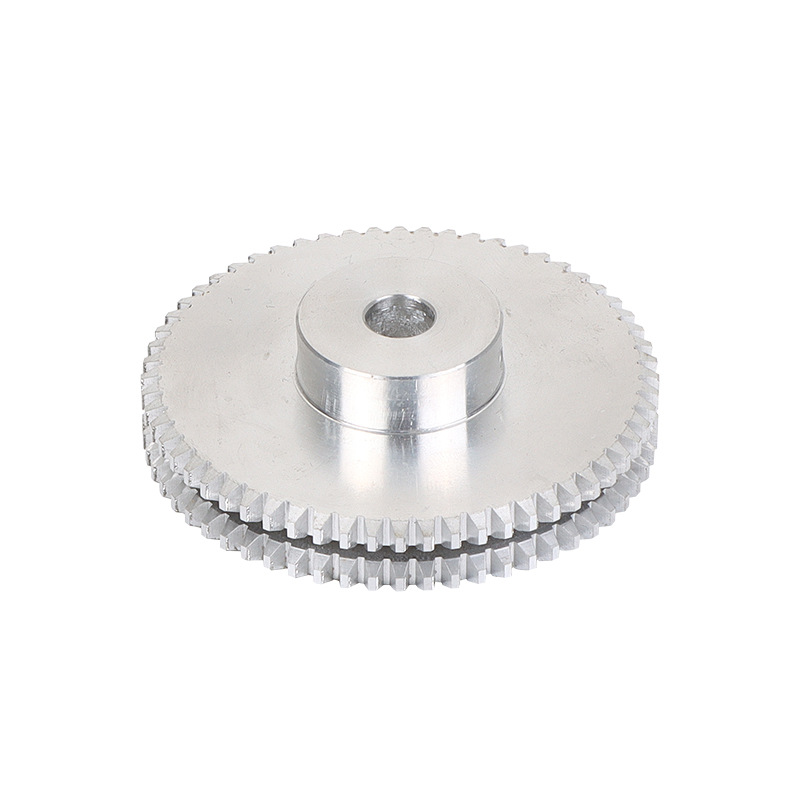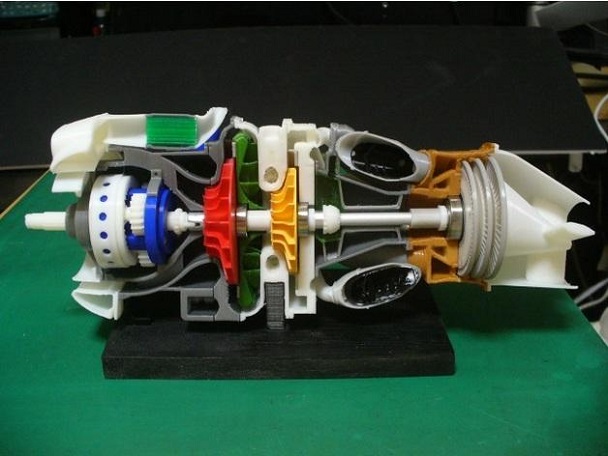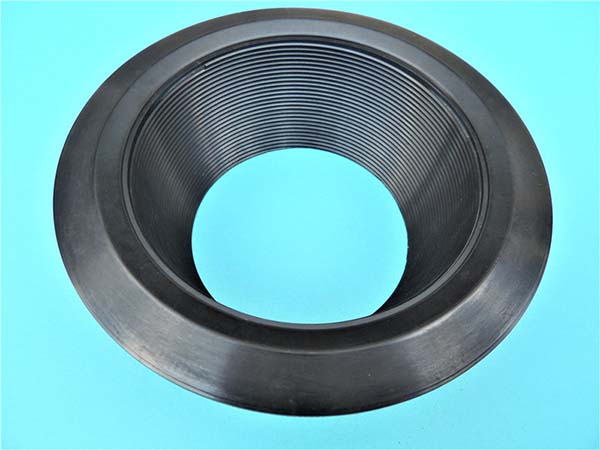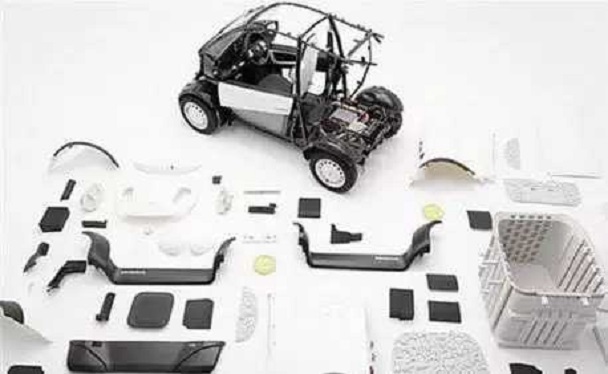1. Introduction: The Art and Science of 3D Printed Jewelry
In the world of luxury and personal adornment, jewelry has always held a special place. It is not merely an accessory but a statement of style, a symbol of love, and a testament to craftsmanship. For centuries, jewelry making has been a blend of artistry and precision, passed down through generations of skilled artisans. However, in recent years, a new technology has emerged that is revolutionizing the way jewelry is designed and produced: 3D printing.
3D printing, also known as additive manufacturing, is a process that creates three - dimensional objects by layering materials based on a digital model. This technology has been making waves across various industries, and the jewelry sector is no exception. It has opened up a world of possibilities, allowing designers and manufacturers to create pieces that were once thought to be impossible to make with traditional methods.
1.1 The Disruptive Power of 3D Printing in Jewelry
3D printing is disrupting the traditional jewelry - making landscape by offering several key advantages. First and foremost, it provides unparalleled design freedom. Designers can now create intricate, complex, and organic shapes that would be extremely difficult, if not impossible, to achieve with traditional methods. Using computer - aided design (CAD) software, they can bring their wildest design concepts to life, exploring new forms, textures, and geometries.
Secondly, 3D printing enables rapid prototyping. Instead of waiting weeks for a prototype to be made through traditional casting methods, designers can have a 3D - printed prototype in their hands within a matter of days, or even hours. This significantly speeds up the design iteration process, allowing for faster innovation and time - to - market.
Another major advantage is customization. With 3D printing, it is possible to create highly personalized jewelry pieces tailored to the individual preferences of customers. Whether it's a unique engraving, a custom - shaped setting, or a one - of - a - kind design, 3D printing can make it happen. This level of customization is in high demand among consumers who are looking for jewelry that truly reflects their individuality.
In addition, 3D printing can lead to cost savings in certain scenarios. While the initial investment in 3D printing equipment can be high, the long - term savings in terms of reduced material waste, lower labor costs for complex designs, and the ability to produce on - demand without large inventory holdings can be substantial.
For Yigu Technology instance, a small independent jewelry designer who wants to create a limited - edition collection of unique, geometric - shaped pendants can use 3D printing to quickly produce the pieces without the need for expensive molds or a large production run. This not only reduces costs but also allows the designer to test the market with a smaller investment.
The rise of 3D printing in jewelry is not just a passing fad; it is a fundamental shift in the way the industry operates. In the following sections, we will delve deeper into the key technologies, materials, and processes that make 3D - printed jewelry a reality, and explore how it is redefining the standards of fine craftsmanship in the jewelry world.
2. Core Technologies: The Foundation of Precision in Jewelry 3D Printing
2.1 Material Mastery: From Resins to Precious Metals
3D printing services for jewelry rely on a diverse range of materials, each chosen for its mechanical properties, aesthetic appeal, and compatibility with specific printing technologies. A well - selected material can make the difference between a mediocre piece and a masterpiece. The following Yigu Technology table summarizes the key materials used in jewelry 3D printing:
| Material Type | Common Alloys/Formulations | Printing Technology | Key Advantages | Typical Applications |
| Precious Metals | Gold (14K/18K), silver (925 sterling), platinum | Direct Metal Laser Sintering (DMLS), Lost Wax Casting | High durability, luster, and investment value | Luxury rings, heirloom necklaces |
| Photopolymer Resins | Photopolymer resins (SLA/DLP) | Stereolithography, Digital Light Processing | Ultra - high detail (50–100μm layer resolution), smooth surface finish | Design prototypes, intricate patterns |
| Plastics (Nylon 12, PolyJet multi - material) | Nylon 12, PolyJet multi - material | Selective Laser Sintering (SLS), PolyJet | Cost - effective prototyping, flexibility for complex geometries | Fashion jewelry, customizable accessories |
2.2 Printing Processes: Balancing Speed and Detail
- Stereolithography (SLA)
SLA is a popular choice for jewelry 3D printing due to its ability to achieve unparalleled detail. It uses UV - cured resins to create objects layer by layer. The laser traces the cross - section of the object onto the surface of the liquid resin, curing it and bonding it to the previous layer. One of the key advantages of SLA is its ability to create extremely fine details. For Yigu Technology example, it can produce filigree patterns with lines as thin as 0.1mm or micro - engravings with a depth of just a few micrometers. The surface roughness of SLA - printed parts can be as low as Ra 0.8μm, resulting in a smooth finish that requires minimal post - processing for many jewelry applications.
A high - end jewelry brand once used SLA to create a 0.5mm - thick lace - patterned pendant. The traditional hand - crafting process for such a complex design would have required a highly skilled artisan spending days on the piece. With SLA, the design was translated from a digital model to a physical prototype in a matter of hours. This not only reduced the manual labor by 70% but also ensured a high level of precision and consistency. The fine lace pattern, with its delicate interwoven strands, was reproduced accurately, something that would have been a challenge to achieve with traditional methods without sacrificing a significant amount of time and cost.
- Lost Wax Casting with 3D Printed Models
Lost wax casting is an age - old technique that has been revolutionized by 3D printing. In this process, a 3D printer creates a wax pattern with precision up to ±0.05mm. This wax pattern replaces the traditionally hand - carved wax models. Once the wax pattern is printed, it is invested in a ceramic shell. After the shell is hardened, the wax is melted out (hence the term "lost wax"), and molten metal is poured into the resulting cavity.
This method is particularly well - suited for complex settings, such as pavé diamond clusters. In a pavé setting, multiple small diamonds are set closely together to create a continuous surface of sparkle. Achieving a uniform and precise setting for each diamond is critical to the overall aesthetic and quality of the piece. With 3D - printed wax patterns, jewelers can ensure that each diamond setting is identical in size and shape, resulting in a more consistent and visually appealing final product. The ability to create complex under - gallery structures, which support the diamonds from below, is also enhanced with 3D - printed wax patterns. These under - gallery structures can be designed to optimize light reflection and refraction, further enhancing the brilliance of the diamonds.
3. Design-to-Production Workflow: Where Creativity Meets Technology
3.1 Digital Design Excellence
The journey from a raw idea to a stunning piece of jewelry begins with digital design. This is where the creative vision of the designer is translated into a tangible, three - dimensional digital model, setting the stage for the entire production process.
- CAD Modeling & Sculpting
CAD (Computer - Aided Design) software is the cornerstone of digital jewelry design. Tools like Rhino, Blender, and specialized jewelry - focused software such as MatrixGold and JewelCAD offer a wide range of features that empower designers. Rhino, with its powerful NURBS (Non - Uniform Rational B - Splines) modeling capabilities, allows designers to create highly precise parametric designs. For Yigu Technology example, a designer can create a ring with a complex, geometrically - precise band. By adjusting the parameters of the NURBS curves, the designer can easily modify the shape, size, and proportions of the ring, exploring different design variations quickly.
Blender, on the other hand, is a popular open - source software known for its versatility in 3D modeling, animation, and sculpting. In jewelry design, its sculpting tools are particularly useful for creating organic forms. A designer looking to create a nature - inspired pendant, perhaps with a detailed flower or leaf motif, can use Blender's sculpting brushes to add fine details, textures, and smooth curves, mimicking the delicate and intricate nature of real - life organic elements.
Generative Design
Generative design, powered by artificial intelligence, is a revolutionary approach that is gaining traction in the jewelry industry. AI - driven tools analyze design constraints, such as material properties, strength requirements, and aesthetic preferences, and then generate multiple design options. These tools optimize lattice structures, for example, to create lightweight yet strong pieces. A case in point is a 3D - printed titanium bracelet. Through generative design, the lattice structure of the bracelet was optimized, reducing the material usage by 40% without compromising its strength. This not only makes the bracelet more comfortable to wear but also reduces production costs. The AI - generated lattice patterns also add a unique, modern aesthetic to the bracelet, appealing to consumers who are looking for innovative and sustainable jewelry designs.
- Customization at Scale
In today's market, consumers are increasingly demanding personalized jewelry. Services like Silveryway are leading the way in providing "sketch - to - jewelry" solutions. They can take a hand - drawn concept or a 2D image and convert it into a 3D model with remarkable accuracy, achieving up to 99% design fidelity. This means that a customer who has a unique idea for a nameplate necklace, perhaps with a special font or a decorative border, can simply draw it on paper or provide a digital 2D sketch. Silveryway's team of designers and technicians will then use advanced software and techniques to transform this sketch into a 3D model, which can be 3D - printed and fabricated into a beautiful, one - of - a - kind necklace.
For birthstone rings, the customization possibilities are endless. A customer can choose the type of birthstone, the setting style (such as prong, bezel, or pavé), the metal type (gold, silver, or platinum), and even add custom engravings around the stone or on the band. With 3D printing, these customizations can be achieved at a relatively low cost and in a short period, compared to traditional jewelry - making methods that would require a significant amount of manual labor and time for each customization. This ability to offer high - quality, customized jewelry at scale is changing the dynamics of the jewelry market, making it more accessible and customer - centric.
3.2 Pre - Processing: The Art of Slicing and Support Structures
Before a 3D - printed jewelry piece can be created, the digital model needs to undergo pre - processing. This crucial step involves two main aspects: slicing the model into layers and designing support structures.
- Slicing Software
Advanced slicing software, such as Materialise Magics and Netfabb, plays a vital role in preparing the 3D model for printing. These software use complex algorithms to slice the 3D model into thin layers. The thickness of each layer, known as the layer height, can be adjusted depending on the desired level of detail and print speed. For a 10mm ring, for Yigu Technology example, the slicing process might involve dividing the model into up to 200 layers, each with a thickness of 50μm. A lower layer height (thinner layers) results in a higher - resolution print, with more detail and a smoother surface finish. However, it also increases the printing time. On the other hand, a higher layer height (thicker layers) speeds up the printing process but may sacrifice some detail.
Materialise Magics, with its user - friendly interface and powerful optimization features, allows designers to fine - tune the slicing process. They can adjust the layer height, infill density (the amount of material inside the object), and even the orientation of the model for printing. For a complex, multi - faceted pendant, the designer can use Magics to orient the model in a way that minimizes the need for support structures while ensuring that all the intricate details are captured during printing. The software also offers features for repairing and optimizing the 3D model, such as filling in small holes, smoothing out rough edges, and reducing file size, all of which contribute to a more efficient and successful print.
- Support Structure Design
Support structures are essential for 3D - printing jewelry, especially for pieces with overhangs, inverted gemstone settings, or complex geometries. Tree - like support structures have emerged as a popular choice due to their ability to minimize material waste. Compared to linear structures, tree - like supports can reduce the amount of support material by up to 30%. This is because they are designed to provide just enough support where it's needed, branching out from the main structure in a way that mimics the natural growth pattern of a tree.
For an inverted gemstone setting, where the gemstone is set in a cup - like structure that hangs down from the main body of the jewelry, tree - like supports are crucial. They ensure that the delicate setting is stable during the printing process, preventing it from collapsing or warping. After the printing is complete, the support structures can be easily removed, leaving behind a clean, finished piece. The use of tree - like supports not only saves on material costs but also reduces the post - processing time, as there is less support material to be removed and cleaned up. Additionally, the unique, organic shape of the tree - like supports can add an interesting texture or pattern to the printed piece, which can be incorporated into the final design aesthetic, creating a truly unique and innovative jewelry item.
6. Competitive Edge: 3D Printing vs. Traditional Jewelry Making
When it comes to creating jewelry, the choice between 3D printing services and traditional craftsmanship is not just a matter of preference but a strategic decision that impacts every aspect of the design, production, and business. Let's take a detailed look at how 3D printing stacks up against traditional methods across several key criteria:
| Criteria | 3D Printing Services | Traditional Craftsmanship |
| Design Freedom | Complex geometries, lattice structures, rapid iteration | Limited by manual carving and mold constraints |
| Speed | Prototypes in 24–48 hours; production runs in days | Weeks for hand-carving, mold-making, and finishing |
| Material Waste | <5% (additive process) | 30–50% (subtractive casting and filing) |
| Cost for Small Runs | Affordable for one-off designs (\(50–\)500 for prototypes) | High setup costs for custom molds (\(5k–\)20k) |
| Precision | Sub-millimeter accuracy (±0.05mm) | Dependent on artisan skill (±0.2mm typical) |
7. Conclusion
Yigu Technology 3D printing services have emerged as a transformative force in jewelry craftsmanship, blending digital precision with artistic vision to create pieces that marry beauty and functionality. By mastering material science, optimizing printing processes, and embracing advanced quality control, these services empower designers to push the boundaries of creativity while delivering unmatched precision and customization. As technology continues to evolve—from AI - driven design to sustainable materials—the future of jewelry lies in the seamless integration of tradition and innovation, where every piece tells a story of craftsmanship elevated by technology.
FAQ
1. What materials can be used for 3D printed jewelry?
Common materials include precious metals like gold, silver, and platinum (using DMLS or lost wax casting), photopolymer resins (for SLA and DLP technologies), and plastics such as nylon 12 (used in SLS) and PolyJet multi - materials. Each material has its own advantages in terms of aesthetics, durability, and cost - effectiveness for different jewelry applications.
2. Is 3D printed jewelry as high - quality as traditionally crafted jewelry?
3D printed jewelry can achieve a high level of quality. It offers sub - millimeter accuracy (±0.05mm in many cases), which can result in consistent gem - setting and intricate detail reproduction. While traditional craftsmanship has its own charm, 3D printing can meet and even exceed the precision standards for many jewelry designs, especially for complex geometries that are difficult to achieve by hand.
3. How much does it cost to get a 3D - printed jewelry piece?
The cost varies depending on factors such as the complexity of the design, the materials used, and the size of the piece. A simple 3D - printed prototype can cost between \(50 - \)500. For production pieces, costs are influenced by material costs (e.g., precious metals are more expensive) and the printing technology required. Overall, 3D printing can be more cost - effective for small runs and custom designs compared to traditional jewelry - making methods.
